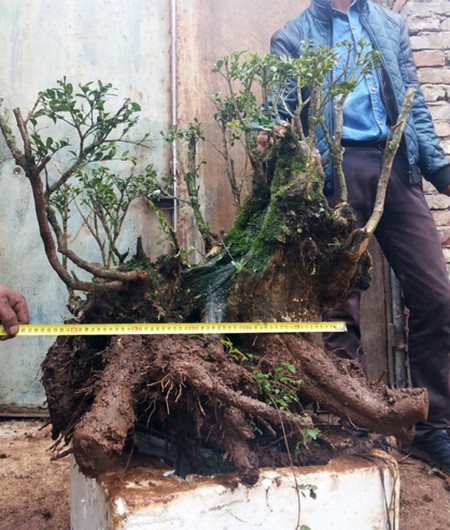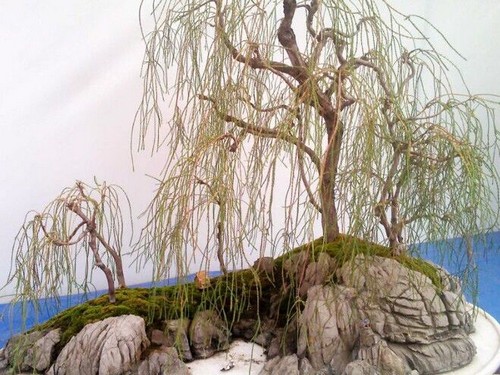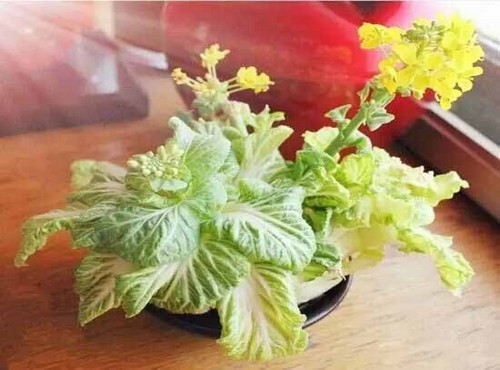Matters needing attention in making bonsai with downhill pile
What do you mean by going down the hill? It means that the plants originally grown in the mountains are artificially transplanted to similar man-made environments. So what should be paid attention to in the process of making downhill pile bonsai? Notes on bonsai production with downhill piles:

1. Don't be blind. many people always want to have a lot of bonsai, which can be watched at any time to satisfy hunger and thirst. However, at the beginning of production, due to the lack of appreciation ability, it was necessary to see the stumps when digging tree stumps in the mountains, and the implementation of "carpet" excavation not only wasted resources, but also destroyed the ecology. When buying in the bazaar, they buy in large quantities, regardless of the good or the bad. As a result, most of them are not high-grade crude products, which are time-consuming, laborious and costly. Therefore, it is true that beginners understand the eagerness of seeking piles, but they must be instructed by experts so as not to get twice the result with half the effort.
2. Do not raise piles at will, as the ancients said: "what you do is done in thought, but it is destroyed by following." The same is true of raising piles. Tree stump maintenance requires patience and care, but also needs to understand plant growth characteristics and soil structure, as well as water and fertilizer irrigation, pest control and other knowledge. During maintenance:
First, do not deal with the stump casually. Each stump should be carefully cut according to its own modeling ideas, and only after dealing with the wound can it be planted in the soil, otherwise it is not conducive to the survival of the stump.
Second, do not equip the soil at will. Soil is an important factor related to the long and good life of the stump. When the soil is well matched, there is a great hope for the stump to survive.
Third, do not apply irrigation and fertilizer at will. Plant growth is inseparable from fertilizer and water, but should be applied with thin fertilizer frequently, watering in a timely and appropriate amount, such as hastily applying heavy water and large fertilizer, and the stump cannot be absorbed, it will cause stagnant water to rot roots or fertilizer damage, and survival will be in danger.
Fourth, do not deal with diseases and insect pests at will. Many diseases and insect pests can endanger plant life within a few days, so they cannot be taken lightly. It is necessary to make timely discovery and prevention.
Fifth, do not fiddle with the stump at will. When the stump is planted on the ground or in a large basin, it is necessary to wait for its root system to develop and fully survive before it can turn the basin and change the soil in the right season and in the right weather. Do not bury it in the ground for a moment, cut into the pot to appreciate it, and move it around, and the living pile will also become a dead pile.
3, modeling must not rush to create a unique style of work, is undoubtedly the most exciting thing, but do not rush.
First, avoid maintenance is not in place hasty modeling. The branches of the stump must grow to a certain degree of strength and gradually form a transition branch with the trunk before they can be trimmed and modeled. No matter how long they are, they will be tied up and hung in a twisted style when the branches grow to a certain length. On the surface, they appear to have a certain shape, but the "lack of heat" can be seen carefully, especially deciduous plants, which are obviously reflected when they are ornamental in winter.
The second is to consider immature and avoid modeling. A tree stump needs to be deliberated over and over again before a modeling scheme can be determined. because of a little knowledge of modeling technology, beginners go to battle blindly, and then make drastic corrections, resulting in a tree stump swinging around and delaying the forming time and timing.
It is suggested that beginners had better put forward their own point of view when modeling, and then seek advice from experts, so that they can not only take detours, but also help to improve their artistic accomplishment.
Time: 2019-05-26 Click:
- Prev

Making weeping willow bonsai with strange willow
Tamarix, a Guanyin willow, a Xihe willow. The stem is not very big, the red stem is weak, and the leaves are as thin as strands, graceful and lovely. Make flowers three times a year, the spike is two or three inches long, its color is pink and shaped like a polygonum flower, so it is also known as Sanchun willow. Its flowers bloom immediately when it rains, and should be planted by the waterside ponds. If the sky is going to rain, Tamarix will rise first to respond to it, also known as the Rain Master.
- Next

Production method of hydroponic bonsai of Chinese cabbage
Containers: bowls and plates, transparent containers are the most suitable! Hydroponic time: before and after the Spring Festival (late January to early March) method: flatten the roots of Chinese cabbage, put it directly in a container, and add the right amount of water! Management method: 1, put it on the sunny windowsill or balcony! Change the water every 5 days.
Related
- Fuxing push coffee new agricultural production and marketing class: lack of small-scale processing plants
- Jujube rice field leisure farm deep ploughing Yilan for five years to create a space for organic food and play
- Nongyu Farm-A trial of organic papaya for brave women with advanced technology
- Four points for attention in the prevention and control of diseases and insect pests of edible fungi
- How to add nutrient solution to Edible Fungi
- Is there any good way to control edible fungus mites?
- Open Inoculation Technology of Edible Fungi
- Is there any clever way to use fertilizer for edible fungus in winter?
- What agents are used to kill the pathogens of edible fungi in the mushroom shed?
- Rapid drying of Edible Fungi

